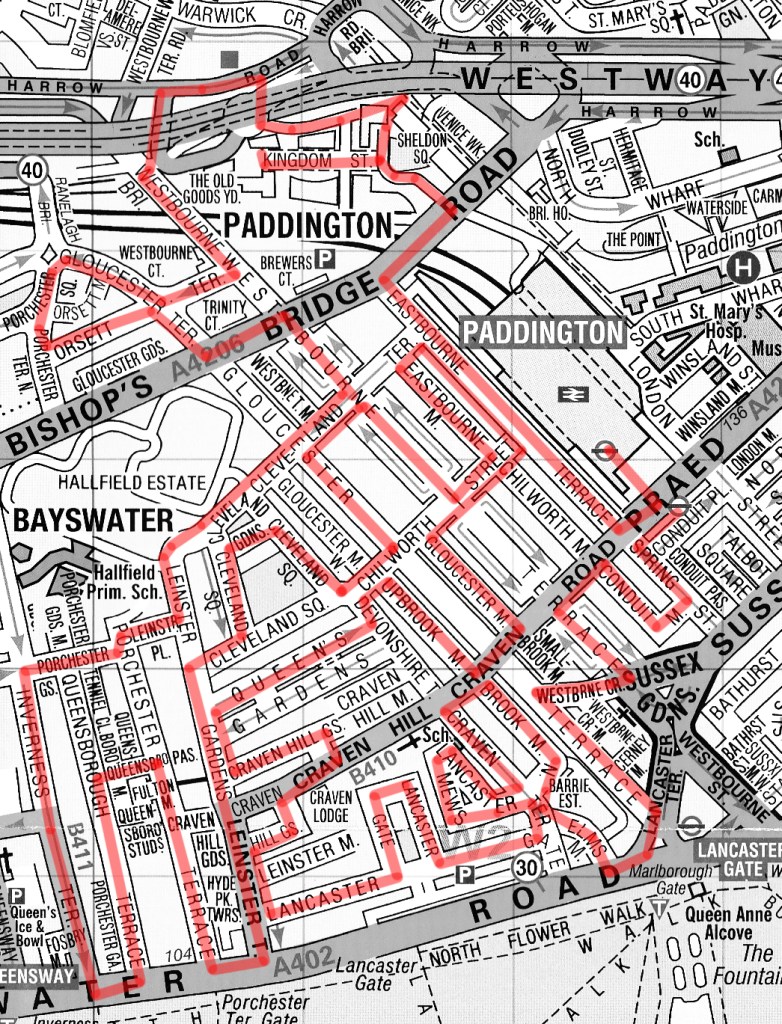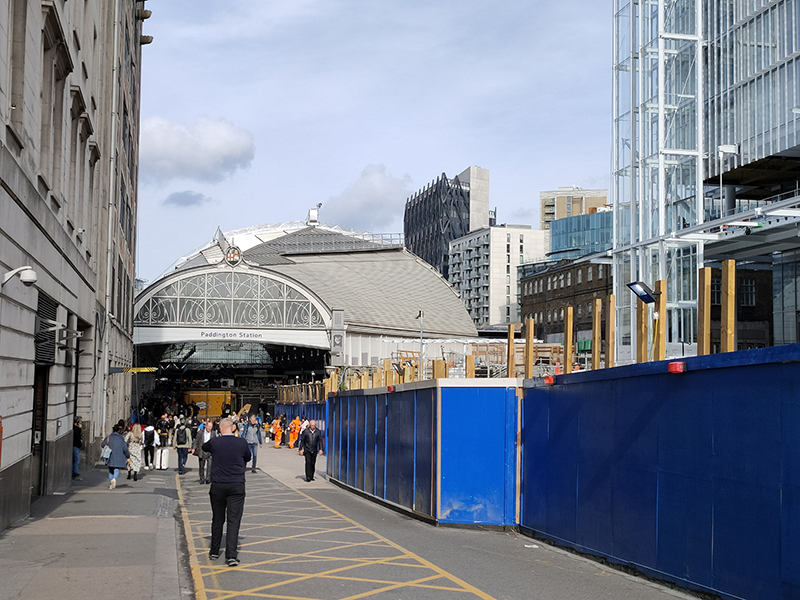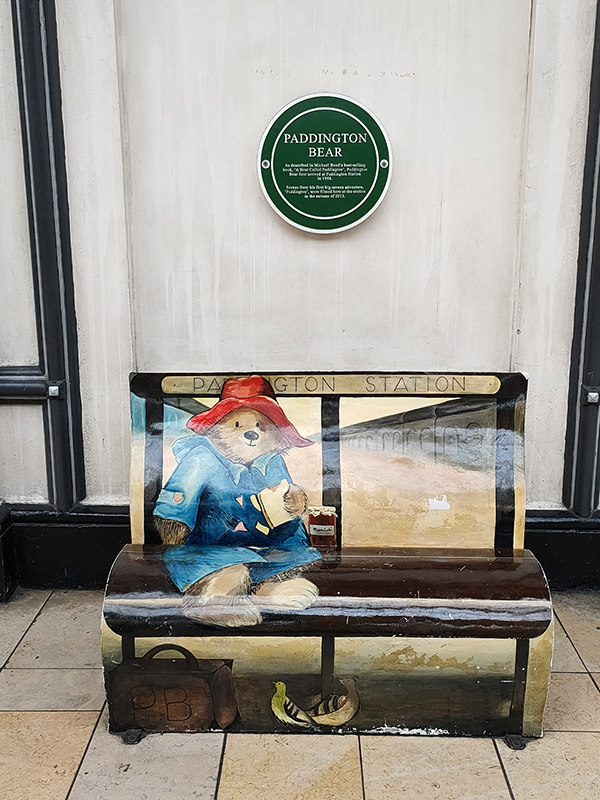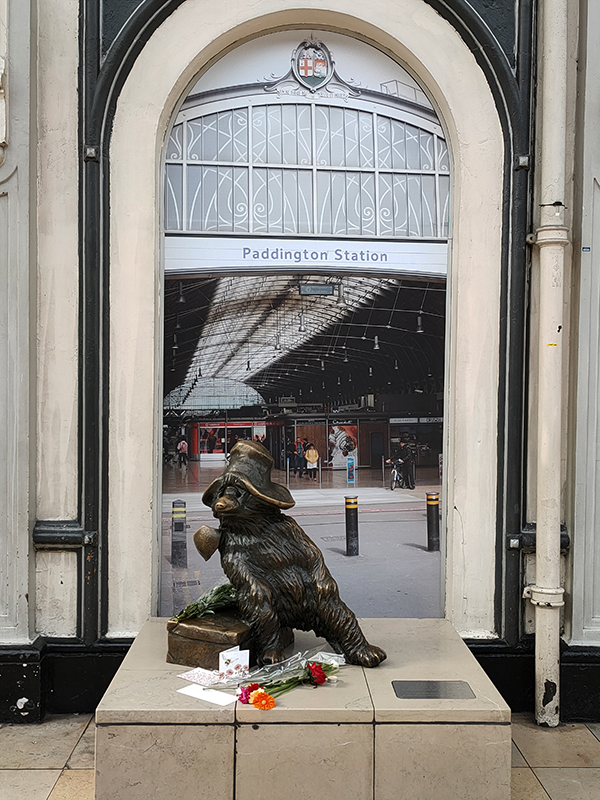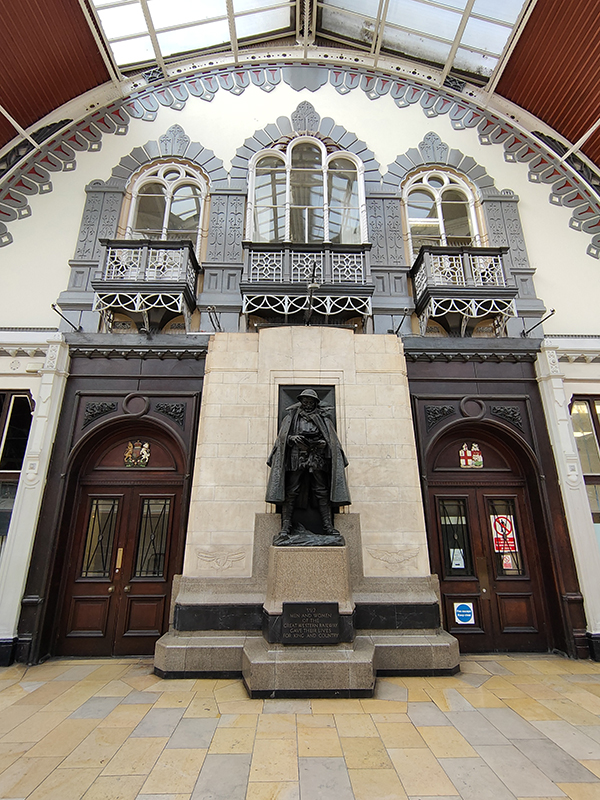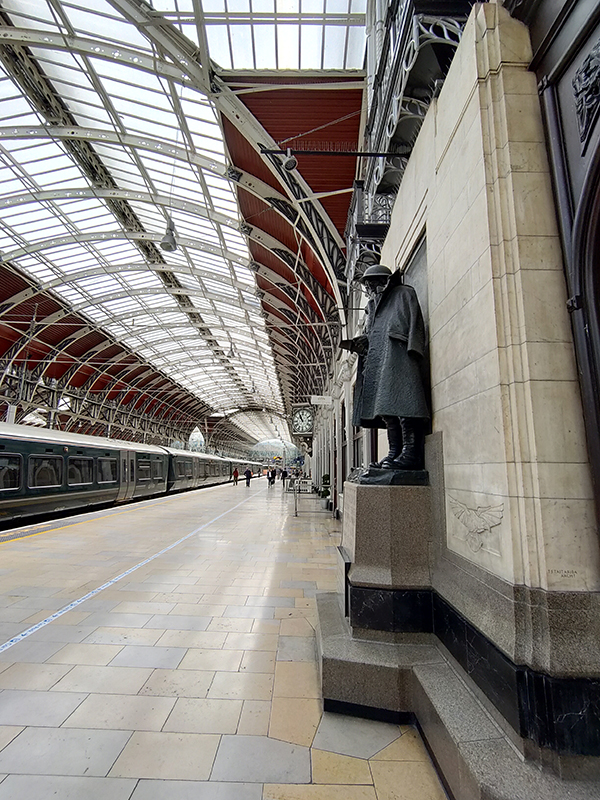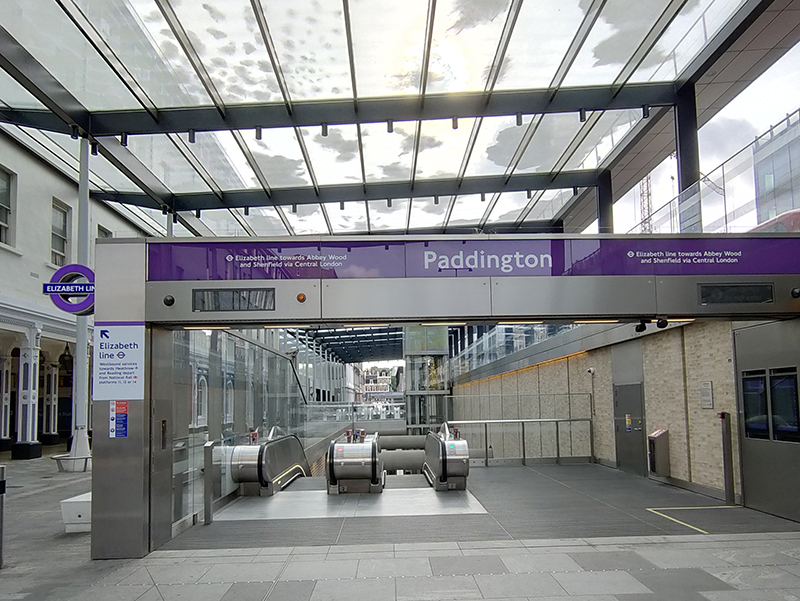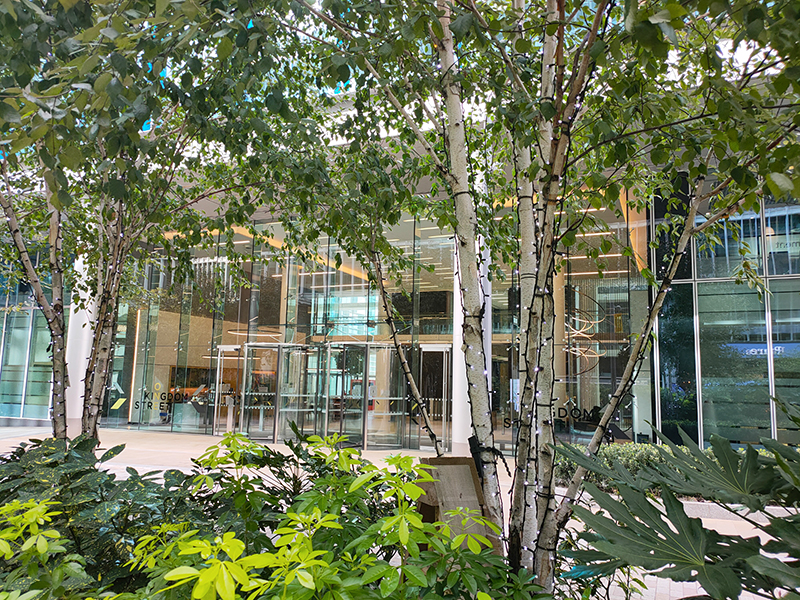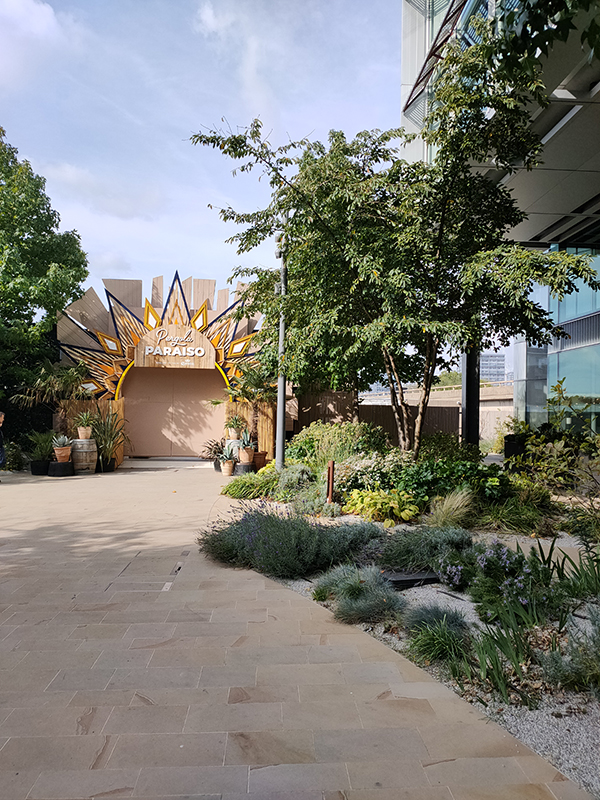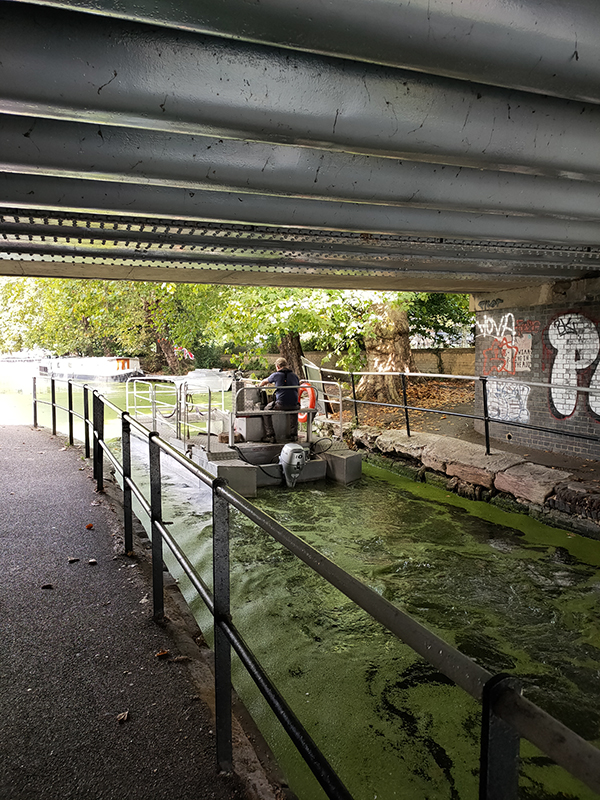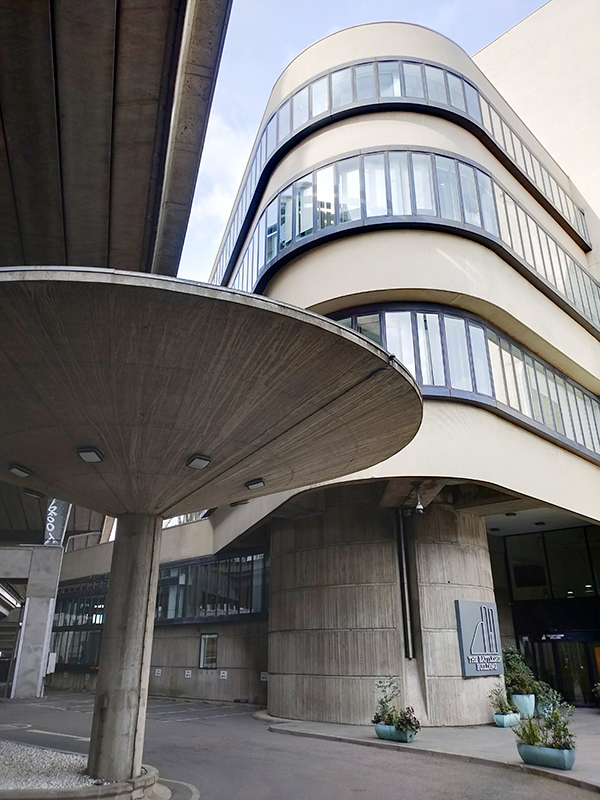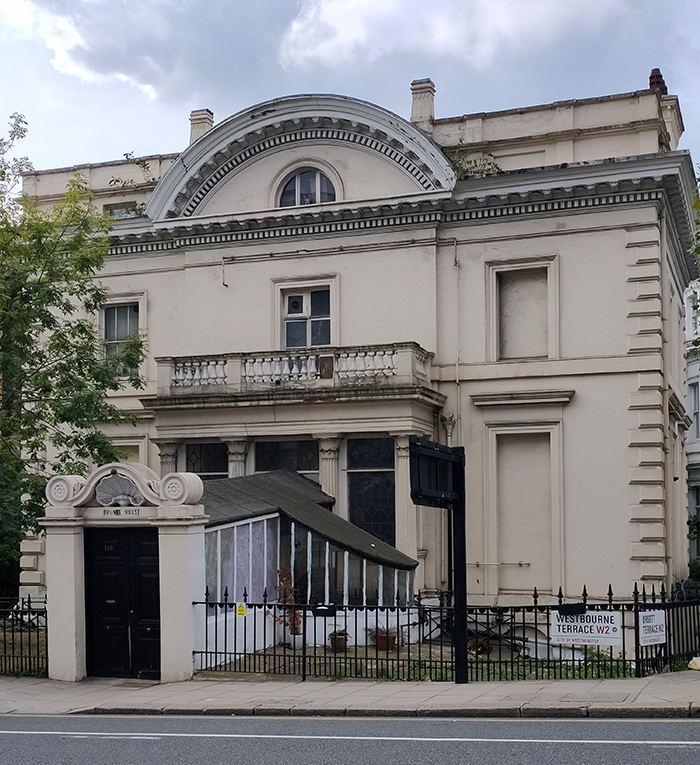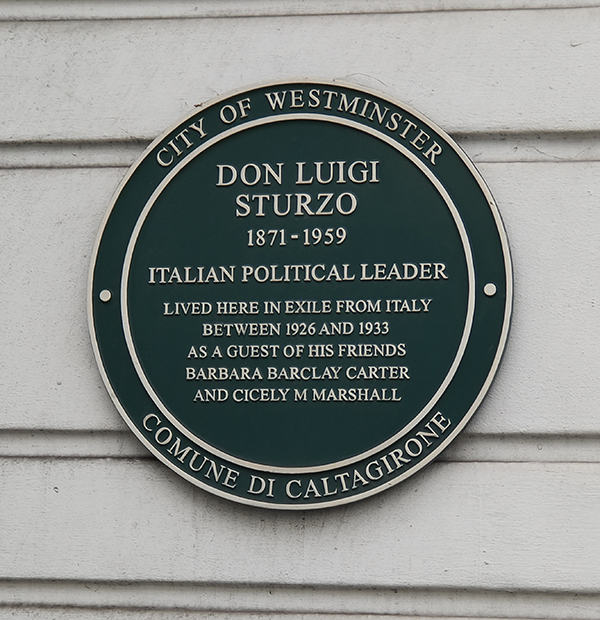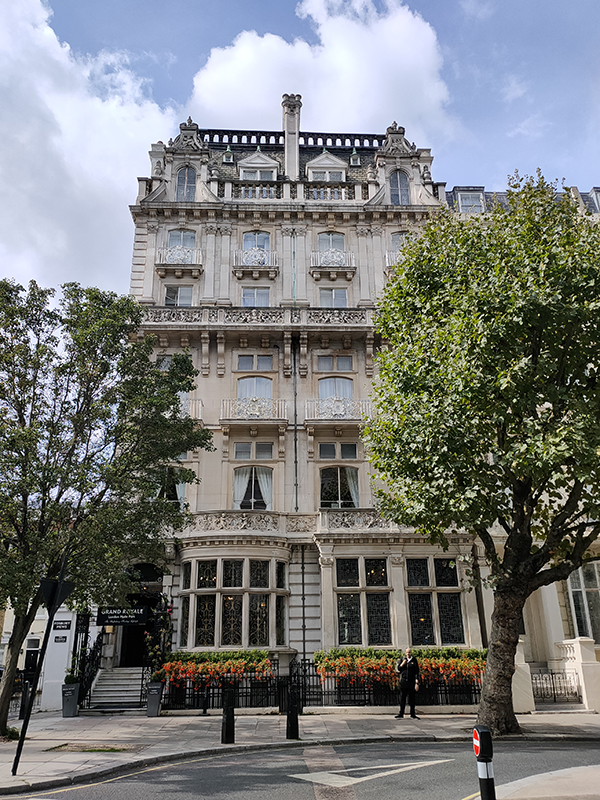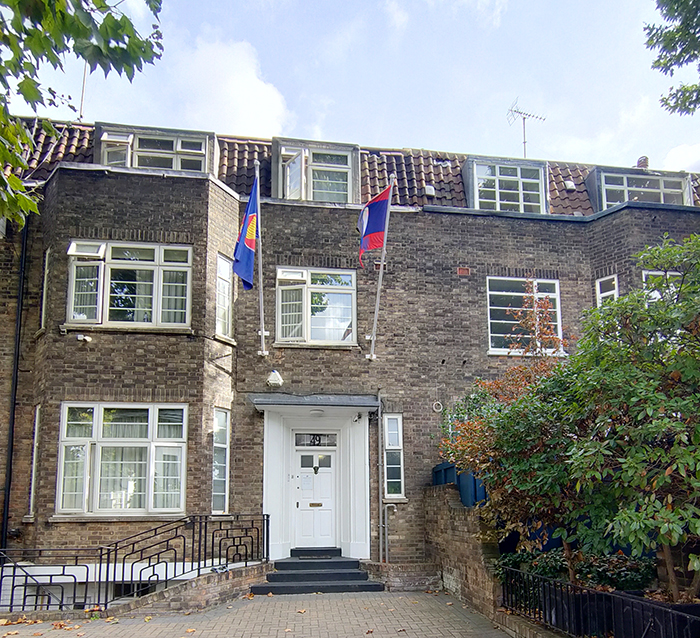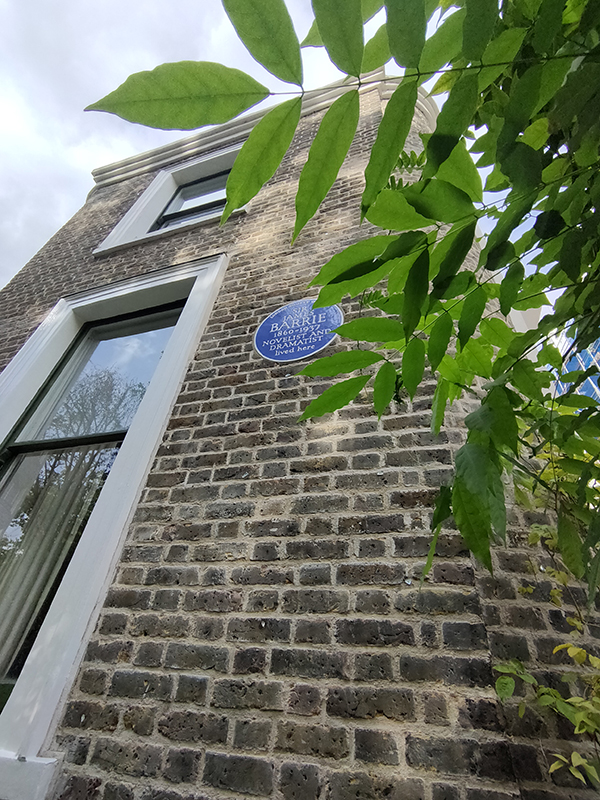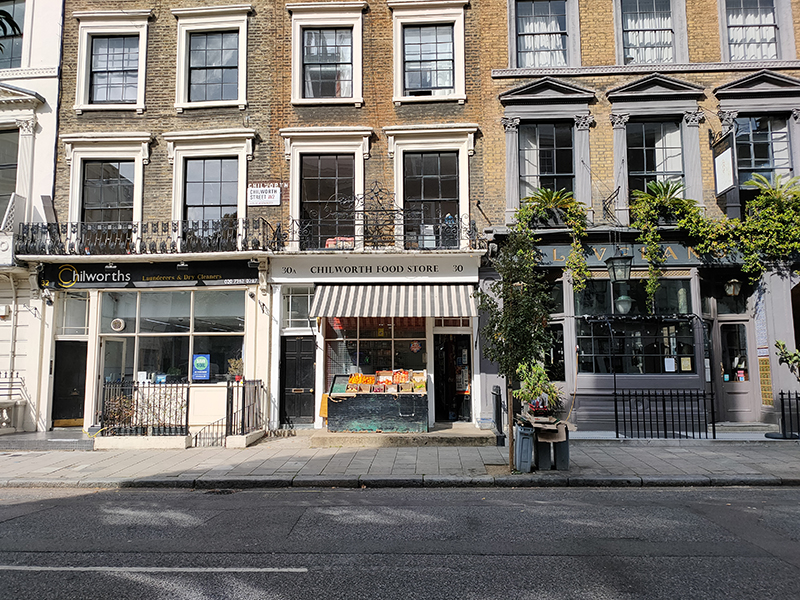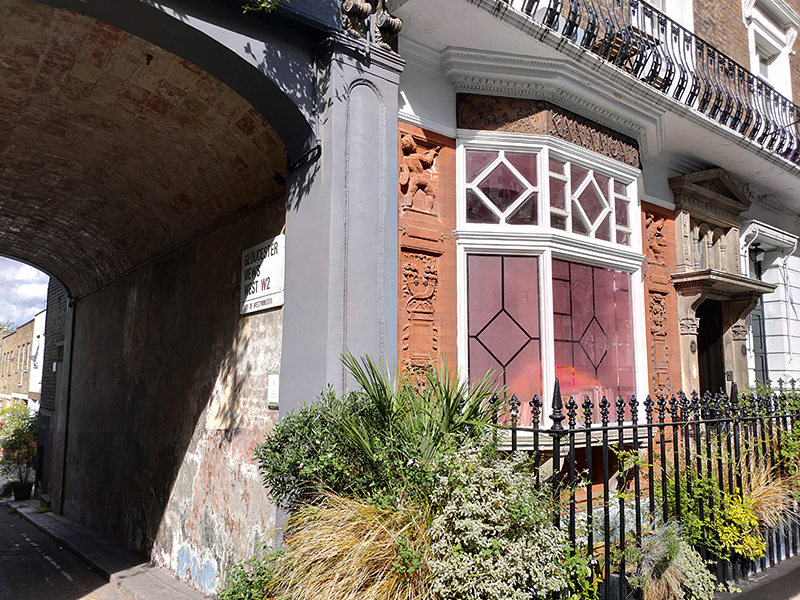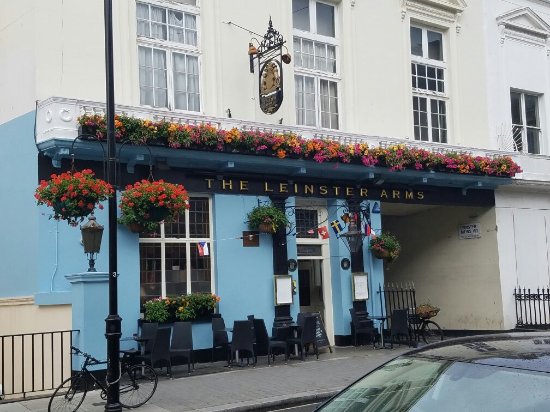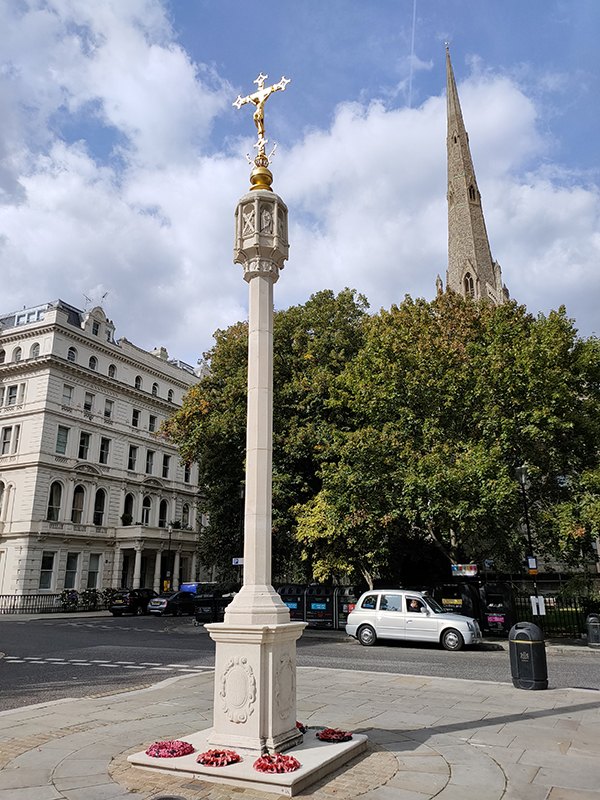After another, longer than intended, break we finally get around to a second visit to Paddington area, this time concentrating on the west of the station between the Westway and the Bayswater Road. This is another largely residential part of town comprised for the most part of mid-19th century terraces lined with stuccoed four or five storey houses. However, there have been a few interesting residents over the years and there are strong associations with two of the most iconic characters in 20th century children’s fiction.
Starting point is Paddington Station which was built as the London terminus for the Great Western Railway (GWR) to the designs of Isambard Kingdon Brunel. It opened in 1854, replacing a temporary station of 1838 which subsequently became the goods depot. In 1863, Paddington became part of the world’s first underground railway, the Metropolitan Line, serving as its original western terminus. As part of the nationalisation of the railways in 1996, a new version of GWR won the franchise to operate intercity services to the South West of England and South Wales and Thames Valley commuter services out of Paddington. In recent times, of course, it has undergone wholesale redevelopment to become a major Crossrail hub, providing the link between Elizabeth line services west to Reading and east to Abbey Wood.
On the left side of the image above is Tournament House (mentioned briefly in the last post). Built in 1935 and designed by P. E. Culverhouse of the GWR Chief Civil Engineer’s Office it was originally given the rather more prosaic appellation “Arrivals Side Offices” before becoming Tournament House in 1987. The shell-like protrusions contain lights that illuminate the GWR Paddington sign.
For very many people, Paddington Station is inextricably linked with the eponymous bear first created by author Michael Bond in 1958 and subsequently immortalised in almost 30 books (with combined sales in excess of 35 million), a much-loved BBC TV series and two hugely popular recent films. The statue of Paddington Bear on Platform 1 was created by Marcus Cornish in the year 2000 and attracts a constant stream of visitors. A bit further along Platform 1 the 1922 bronze memorial to the employees of GWR who died in the Great War, sculpted by Charles Sargeant Jagger, garners somewhat less attention.
We leave the mainline station via its western exit and make our way up on to Eastbourne Terrace past the entrances to the Elizabeth Line.
Crossing over Bishop’s Bridge Road we head down into Sheldon Square and along Kingdom Street through the new development created in what was the old goods depot area. Kingdom Street turns out to be an unforeseen dead end, culminating in the Pergola mega-bar, so we have to turn back and try and find another exit via the walkway of the canal.
This also proves unsuccessful so we end up taking a foot-ramp down into the underbelly of the Westway leading to the entrance to the Battleship Building. Originally known as Canal House, this was built in 1969 as a British Rail Maintenance Depot. The original architects were the practice of Bicknell and Hamilton who incorporated elements inspired by the German Modernist Eric Mendelsohn. In the early 1990’s the building fell into disrepair but it was still awarded Grade II listed status in 1994 and in the year 2000 was refurbished by architects Allford Hall Monaghan Morris becoming the London HQ of clothing firm, Monsoon, until 2011.
Beyond the Battleship is another dead end as shown below.
Retracing my steps yet again I encounter a security man who directs me up the side of a vehicle ramp that leads to the Harrow Road. A couple of hundred metres west I’m able to duck under the Westway again and access Westbourne Bridge which crosses over the railway lines and gets us back on track.
Westbourne Bridge leads into Westbourne Terrace; at the apex of this and Orsett Terrace sits Brunel House (one of the many so-called) built in 1848 and designed in an Italianate style by architect George Ledwell-Taylor. Despite being Grade II listed and reputed to have been the London home of Brunel, while he was working on Paddington Station, the 20 bedroom house is in a dilapidated state and seems to be unoccupied.
Next up is Gloucester Terrace where we find a green plaque commemorating the Italian Catholic Priest and Politician, Luigi Sturzo (1871 – 1959) who lived here between 1926 and 1933 having been forced into exile in 1924 when Mussolini’s fascists came to power.
Porchester Square is the next stage of a loop that returns us to Bishop’s Bridge Road. Here there are some prime examples of the early-Victorian properties I referred to in the opening paragraph.
We continue south on another stretch of Westbourne Terrace then turn westward again along Cleveland Terrace. This swings south into Leinster Gardens from where we take a right through Leinster Place to Porchester Gardens which we follow as far as Inverness Terrace then head down towards Hyde Park. Towards the bottom end of Inverness Terrace is the Grand Royale Hotel. This was built at the turn of the 20th century and according to society gossip of the time was commissioned by the Prince of Wales (soon to be Edward VII) as a private residence for his former mistress Lillie Langtry. Within a few years the house was acquired by Louis Spitzel, a merchant banker, who engaged fashionable architects Mewes and Davis to undertake a renovation which included the addition of a private theatre. The house became a hotel in 1966 and was reopened after refurbishment in 1972 with an ornate theatre bar as its most striking attraction.
On reaching the Bayswater Road we turn briefly east before heading back north up Queensborough Terrace. On the exterior of no.38 (The Byron Hotel – looking somewhat sprucer than most of its neighbours) is a blue plaque honouring the English composer William Sterndale Bennett (1816 -1875). I’m not au fait with Bennett’s works but it appears they were admired by Mendelssohn and Schumann, both of whom he became friends with. He composed around 130 musical works in total; with the earliest of those being held in the highest regard today. From 1866 until his death he served as principal of the Royal College of Music, where he had enrolled as a student at the tender age of ten. He is credited with saving the RAM from closure and its renaissance under his watch is probably a greater legacy than his music.
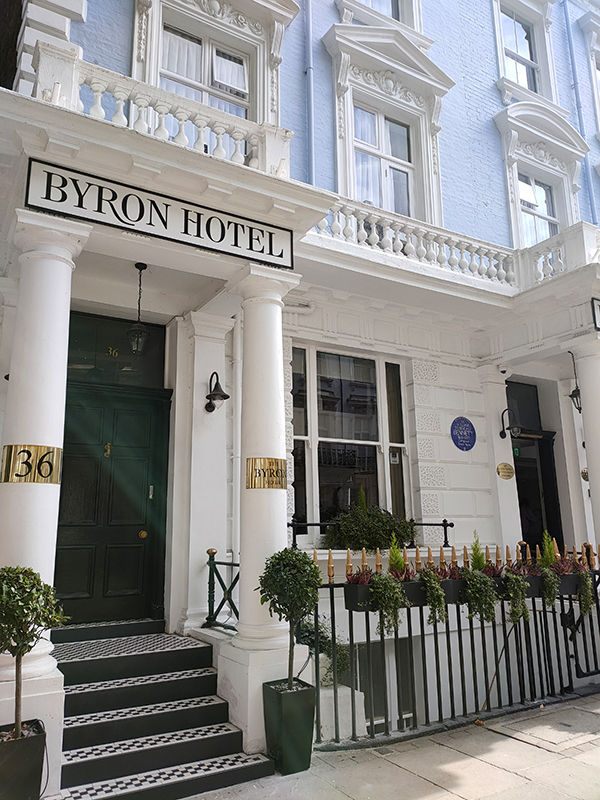

Cutting through Queensborough Passage we arrive on Porchester Terrace and before heading back down to the Bayswater Road turn briefly north to check out a be-flagged but rather unprepossessing building which turns out to be the Embassy of Laos.
Back on the Bayswater Road, before heading back north up Leinster Terrace, we just about manage to spot the blue plaque at no.100 celebrating the one-time residency of the novelist and playwright J.M Barrie (1860 -1937). Barrie moved here in 1900 with his wife Mary, (nee Ansell). Two years later his most famous creation, Peter Pan, made a first appearance in the novel The Little White Bird before being immortalised in the play Peter Pan, or The Boy Who Wouldn’t Grow Up which had its first stage performance on 27 December 1904 at the Duke of York’s Theatre. Barrie’s personal life was unconventional (to say the least), his marriage was reportedly unconsummated and in 1908 Mary began an affair with a man twenty years her junior whom she married following divorce from Barrie who, nonetheless, continued to support her financially.
A short way up Leinster Terrace is today’s final blue plaque marking the house where the American author Francis Bret Harte (1836 – 1902) lived during the latter part of his life. Completely unknown to me beforehand, Harte is apparently most renowned for his short stories chronicling the protagonists of the California Gold Rush. He left the United States in 1878, following a decline in the popularity of his writings, initially taking up the role of US consul in the German town of Krefeld. His former friend, Mark Twain, tried to block his appointment on the grounds that “Harte is a liar, a thief, a swindler, a snob, a sot, a sponge, a coward… To send this nasty creature to puke upon the American name in a foreign land is too much”. (Don’t hold back, Mark – tell us what you really think.) Subsequently, Harte was given a similar post in Glasgow before ending up in London. Throughout this time he never called upon his wife and children to leave America and join him.
From Leinster Terrace we continue on into Leinster Gardens then loop eastward round Cleveland Square and Cleveland Gardens to end up on Chilworth Street where the laundry and comestible needs of the local population are well catered for.
The pub on the right above, The Cleveland Arms, has been around since 1852 but it looked to be closed when I passed by, which was post-midday. Hopefully, that was just a one-off. Adjacent to the pub, on the other side of Gloucester Mews, is the splendidly ornate frontage of what was once the premises of J. Kinninmont & Sons, builders and decorators. It appears that this family business lasted (in this location) for just over a century, disappearing in the early 90’s. The property is currently occupied by a hairdresser’s which, charmingly, has retained the Kinninmont name.
We turn left next, finding ourselves back on Gloucester Terrace with more of those stuccoed townhouses stretching out before us.
From here we make our way back to today’s pub of the day (by default largely as it was actually open), the Leinster Arms on Leinster Terrace. Taking us there are Cleveland Terrace, Eastbourne Mews, Chilworth Street (again), Gloucester Mews, Craven Road, Upbrook Mews, Devonshire Terrace, Queen’s Gardens, Craven Hill Gardens and (plain old) Craven Hill. When I entered there was only one other patron, who left not long after having drunk what I presumed to be his regular lunchtime pint. Just as I polished off the last of my glass of wine, calamari and falafels a (German – I’m guessing) couple wandered in to avert an existential crisis. Full disclosure, I forgot to take a photo when I got back outside so this one is taken from the pub’s Facebook page.
We exit Leinster Terrace to the east on Lancaster Gate which incorporates a square of the same name in which resides Spire House. This apartment block was built in 1983 on the site of the former Christ Church which dated from 1855. In the late Seventies the main structure of the church was declared unsafe and demolished, leaving just the Grade II listed tower and Gothic stone spire, which together rise nearly 205ft high, to be incorporated into the new (and frankly pretty hideous) development.
Between Spire House and the Bayswater Road stands The Lancaster Gate Memorial Cross, a grade II listed war memorial in commemorating residents of the Borough of Paddington who died fighting in the First World War. It was was designed by Walter Tapper in the Gothic Revival style and its sculpture was executed by Laurence Arthur Turner. It consists of a column surmounted with a golden cross, below which in eight niches are the figures of Saint George for England, Saint Louis for France, and six of the warrior saints of Christendom: Maurice, Longinus, Victor, Adrian, Florian and Eustace.
A few steps away from the war memorial is a monument to Reginald Brabacon, 12th Earl of Meath (1841 – 1829). Created shortly after his death it consists of a tall pedestal of Portland Stone with inset portrait relief and Soanesque domed top surmounted by statue of a nude seated boy. Brabacon was an Irish politician and philanthropist, who held several senior diplomatic posts and was involved in many charitable organisations. On succeeding his father as Earl of Meath he joined the Conservative benches in the House of Lords where his chief accomplishment was to pressure the government to introduce an “Empire Day” (to nurture a sense of collective identity and imperial responsibility among young empire citizens). I have been unable to ascertain what the nude boy is all about.
Nipping round the corner onto Bayswater Road we come across what should be the Thistle Hotel Hyde Park but which is all closed up and stripped of any identifying signage. As I go in for a closer look a workman/security person comes out of the building to check what I’m up to. Self-identifying as an ex-squaddie he vouchsafes that the building is now owned by the Government and leaves me to draw my own inference from that. All very mysterious. Thistle Hotels is part of the GLH Group which operates a number of hotels in central London. This hotel is still listed on their website but dates beyond the start of October 2022 are unavailable for booking and there is no explanation for the closure of the property. At this time, I was unable to discern anything further from online searches.
At the eastern extremity of Lancaster Gate we turn into Craven Terrace. For some reason, that wasn’t obviously apparent, the pub here, The Mitre was doing a roaring lunchtime trade and Sheila’s Cafe wasn’t doing so badly either.
Having done a circuit of Lancaster Mews we continue north on Craven Terrace past today’s second Launderette of the day though this one doesn’t strictly qualify either (no self service machines you see). However, it does deserve a special mention for doubling up as a deli bar – a definite first.
The section of Craven Road that connects us with Brook Mews has a splendidly international flavour with a Malaysian Cafe, European Food Market and Persian Restaurant all within a few yards of each other.
At the end of Brook Mews there are steps down to Elms Mews which runs back into Bayswater Road. From here it’s a relatively short final stretch back to Paddington Tube Station via Gloucester Terrace (Pt 3), Westbourne Crescent, Westbourne Terrace (Pt 3), Craven Road (Pt 2), Conduit Mews and, finally, Spring Street; the last of these with an international flavour of a somewhat different kind.

